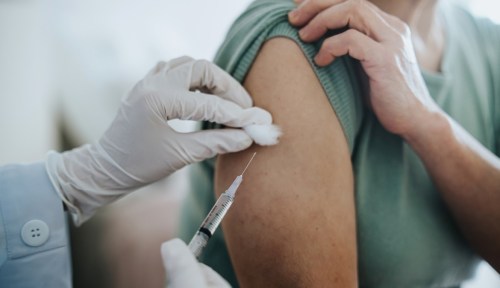A complaint filed Monday by the nonprofit Project South alleges that a gynecologist is performing hysterectomies on immigrants detained by Immigration and Customs Enforcement (ICE) without their full consent. The whistleblower is a nurse named Dawn Wooten, who worked at an immigration detention in Georgia, and her complaint sparked Democratic officials and activists to demand an investigation into the allegations (and, in the latter case, to abolish ICE altogether).
Experts in This Article
board-certified OB/GYN and clinical professor at the Yale University School of Medicine
Paola Mendoza is a film director, activist, author, and artist working for women’s rights. She is also the co-founder of the Women’s March and co-authored the New York Times bestseller Together We Rise: Behind the Scenes at the Protest Heard Around the World. Her latest book is Sanctuary.
Forced, coerced, or compulsory sterilizations are the terms used to describe hysterectomies performed on detained women without their approval. “A hysterectomy refers to the removal of the uterus from the body,” explains Mary Jane Minkin, MD, a board-certified OB/GYN and founder of Madame Ovary. “One can take out the uterus and the cervix, and that’s called a total hysterectomy; if you just take out the uterus and leave the cervix it is called a supracervical hysterectomy.” In the case of the ICE detainees, Dr. Mahendra Amin (the gynecologist identified by Prism Reports) allegedly forced at least 17 immigrants to have hysterectomies and other gynecological procedures, according to a press release from Representative Pramila Jayapal shared with The Cut.
Under normal circumstances, Dr. Minkin explains that hysterectomies are mostly conducted as an effort to stop life-threatening health issues. “There should always be a good reason for a hysterectomy,” she says, “like cancer, uncontrollable bleeding, or a very large uterus which is pressing on other pelvic organs.” In the case of ICE detainees, there most certainly isn’t a good reason. And, unfortunately, this isn’t a first for the United States; undocumented immigrants and BIPOC have long been subjected to forced sterilization throughout American history.
“Forced sterilization is not new in this country,” says Paola Medoza, a film director, activist, and author of the new young adult book Sanctuary. “Black women, Indigenous women, disabled women, and immigrants have been forcibly sterilized against their will and without their knowledge in many cases.” It’s true: The 1927 Supreme Court case Buck v. Bell led to nearly 70,000 sterilizations that disproportionally targeted Black women with the intention of removing “undesirable” traits as possible from the American population. The Indian Health Service deemed a quarter of Native American women “unfit” to procreate and sterilized them in the 1960s and 70s. And between 1968 and 1974, more than 200 women who delivered babies at Los Angeles County and USC Medical Center were given forced hysterectomies, many of whom didn’t learn of their sterilization until years later. These are just a few examples.
“It is not a ‘bad apple’ or a ‘bad doctor’—it is a systematic problem that is connected to the lack of humanity within a country that has jailed children for years.”
“[Forced sterilizations are] connected directly, in my opinion, to the white supremacy that is at the heart of this administration,” says Mendoza. “It is not a ‘bad apple’ or a ‘bad doctor’—it is a systematic problem that is connected to the lack of humanity within a country that has jailed children for years.” Mendoza believes these allegations are very likely only one example of the human atrocities happening behind closed doors. “The stories that get reported out have to have a very high threshold in order to be put on paper. I myself have spoken to hundreds of women whose stories are absolutely horrific, and the injustices are absolutely horrific,” says Mendoza.
Leading into a highly-charged election year, America’s best hope at ensuring the violence of America’s past (and now present) doesn’t carry into the future starts with your vote, says Mendoza. “Voting won’t fix everything, but it will ensure that the most vulnerable populations are protected if we’re able to get this administration out,” she says. “We also need to be supporting local organizations on the ground and we need to realize that the idea of detaining immigrants is insane. These people are not criminals. These people come here, in many cases, looking for political asylum. And what we do is put them in jail. People need to also realize that that’s what [detention centers] are; they’re jails.”
As Speaker Nancy Pelosi (D-CA) said in a statement on September 15, forced sterilizations strip undocumented immigrants of their basic human rights. “This profoundly disturbing situation recalls some of the darkest moments of our nation’s history, from the exploitation of Henrietta Lacks, to the horror of the Tuskegee Syphilis Study, to the forced sterilizations of Black women that Fannie Lou Hamer and so many others underwent and fought,” she said.
It’s time for us to ask ourselves: What history do we want to leave behind?
Sign Up for Our Daily Newsletter
Get all the latest in wellness, trends, food, fitness, beauty, and more delivered right to your inbox.
Got it, you've been added to our email list.











